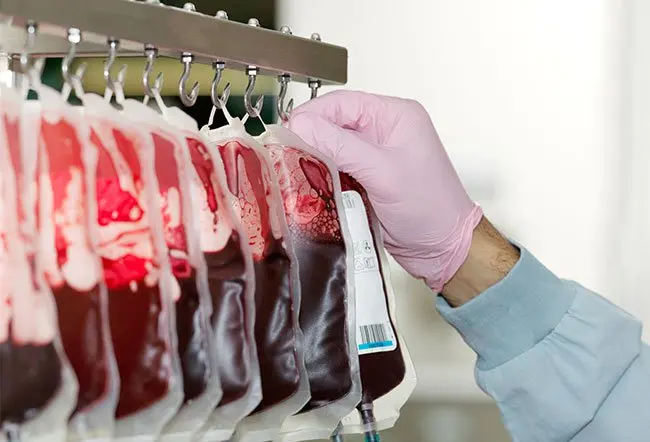Plasma
Blood plasma is an intravascular liquid component of blood obtained after removal of blood cells. Plasma holds proteins and other components of the blood in suspension. It makes up about 55% of the body’s total blood volume.
- Ensuring Safe Journeys: 10 Essential Road Safety Rules for Children in India
- Rule 12. Defenses and Objections: When and How Presented; Motion for Judgment on the Pleadings; Consolidating Motions; Waiving Defenses; Pretrial Hearing
- 13 Awesome Facts About Bats
- प्रेगनेंसी के दूसरे महीने के लक्षण
- Transparent, Translucent, and Opaque Objects
Plasma is 95% water and contains important dissolved proteins, such as serum albumins, globulins, and fibrinogen), glucose, clotting factors, electrolytes (Na+, Ca2+, Mg2+, HCO3-, Cl-, etc.), hormones, carbon dioxide, and oxygen (which makes up about 6%-8%). It has an intravascular osmotic effect that maintains the balance of electrolytes and protects the body from infection and other blood disorders.
Bạn đang xem: How Many Pints of Blood Are There in the Human Body?
Blood cells
Xem thêm : Ugadi 2024: క్రోధి నామ సంవత్సరం గతంలో ఎప్పుడు వచ్చింది.. తెలుగు సంవత్సరాలు పేర్లు.. అర్దాలు ఇవే..
About 50% of blood is composed of three major groups of blood cells: red blood cells, white blood cells, and platelets. Most blood cells are produced by the single type of unspecialized cell present inside the soft fatty tissue of the bone cavity.
- Red blood cells contain hemoglobin, which delivers oxygen to tissues and helps them continue functioning properly.
- White blood cells are part of the immune system and are of five different types: neutrophils, lymphocytes, monocytes, eosinophils, and basophils. These help protect against infections and have a role in inflammation and allergic reactions.
- Platelets are smaller cells that play an important role in blood clotting and seals of micro punctures that occur in the body.
The rate of blood cell production is controlled by demand. The typical lifespan of blood cells ranges from a few hours to days for white blood cells, about 10 days for platelets, and about 120 days for red blood cells.
Proteins
Plasma proteins serve various important functions, including the transport of lipids, hormones, vitamins, and minerals throughout. Some proteins act as enzymes, complement components, protease inhibitors, or kinin precursors. The three main plasma proteins include albumin, globulin, and fibrinogen.
- Serum albumin makes up about 55% of blood proteins. It helps maintain the oncotic pressure of plasma (prevents body swelling and keeps fluids in the vascular compartment) and acts as a carrier molecule for the transport of lipids and steroid hormones.
- Globulins make up about 38% of blood proteins. They help transport ions, hormones, and lipids and play an important part in the body’s defense system.
- Fibrinogen makes about 7$ of blood proteins, and its conversion to insoluble fibrin is essential for blood clotting.
Remaining plasma proteins (1%) are regulatory proteins, such as enzymes, proenzymes, and hormones. Blood proteins are mostly synthesized in the liver.
Nutrients and hormones
Blood plays a role in the functions of the endocrine system. Nutrients including glucose, amino acids, vitamins, minerals, and fatty acids are absorbed in the bloodstream through capillaries in intestinal villi. These nutrients are transported along with blood to various organs of the body. Blood also acts as a transport medium for hormones secreted by the endocrine system’s glands and helps them reach their target site so that they can carry out their actions.
Nguồn: https://nanocms.in
Danh mục: शिक्षा

